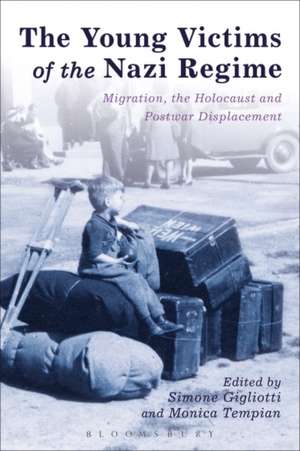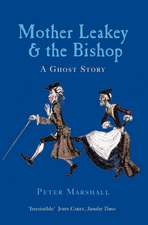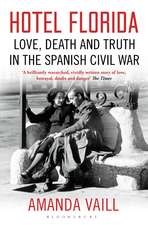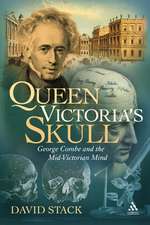The Young Victims of the Nazi Regime: Migration, the Holocaust and Postwar Displacement
Editat de Simone Gigliotti, Monica Tempianen Limba Engleză Paperback – 4 mai 2016
| Toate formatele și edițiile | Preț | Express |
|---|---|---|
| Paperback (1) | 221.67 lei 3-5 săpt. | |
| Bloomsbury Publishing – 4 mai 2016 | 221.67 lei 3-5 săpt. | |
| Hardback (1) | 776.81 lei 6-8 săpt. | |
| Bloomsbury Publishing – 4 mai 2016 | 776.81 lei 6-8 săpt. |
Preț: 221.67 lei
Preț vechi: 247.64 lei
-10% Nou
Puncte Express: 333
Preț estimativ în valută:
42.42€ • 43.95$ • 35.40£
42.42€ • 43.95$ • 35.40£
Carte disponibilă
Livrare economică 01-15 martie
Preluare comenzi: 021 569.72.76
Specificații
ISBN-13: 9781472527110
ISBN-10: 1472527119
Pagini: 368
Ilustrații: 30 bw illus
Dimensiuni: 156 x 234 x 23 mm
Greutate: 0.54 kg
Editura: Bloomsbury Publishing
Colecția Bloomsbury Academic
Locul publicării:London, United Kingdom
ISBN-10: 1472527119
Pagini: 368
Ilustrații: 30 bw illus
Dimensiuni: 156 x 234 x 23 mm
Greutate: 0.54 kg
Editura: Bloomsbury Publishing
Colecția Bloomsbury Academic
Locul publicării:London, United Kingdom
Caracteristici
Transnational reach reflected in a strong list of international contributors from the USA, the UK, Israel, Australia, New Zealand, Austria, Germany, Poland and Brazil
Notă biografică
Simone Gigliotti is Senior Lecturer in History at the Victoria University of Wellington, New Zealand. She is the author of The Train Journey: Transit, Captivity, and Witnessing in the Holocaust (2009). Simone is also one of the co-editors of The Holocaust: A Reader (2005) and Ethics, Art and Representations of the Holocaust (2014).Monica Tempian is Senior Lecturer in German at the Victoria University of Wellington, New Zealand.
Cuprins
Part I: MigrationDepartures to New Homelands: Adaptation and Belonging in Refugee Countries1. Jewish Refugee Children in the USA (1934-1945): Flight, Resettlement, Absorption Judith Tydor Baumel-Schwartz (Bar-Ilan University, Ramat-Gan, Israel)2. "Detour to Canada". The Fate of Juvenile Austrian-Jewish Refugees After the 'Anschluss' of 1938 Andrea Strutz (University of Graz, Austria)3. "This tear remains forever." German-Jewish Refugee Children and Youth in Brazil (1933-1945): Resettlement, Acculturation, Integration Marlen Eckl (University of Sao Paolo, Brazil)4. A Distant Sanctuary: Australia and Child Holocaust Survivors Suzanne D. Rutland (University of Sydney, Australia)5. "The Children Are a Triumph": New Zealand's Response to Europe's Children and Youth, 1933-1949 Ann Beaglehole (Waitangi Tribunal, Wellington, New Zealand)6. "No common mother tongue or fatherland": Jewish Refugee Children in British Kenya Jennifer Reeve (University of East Anglia, UK)Part II: The HolocaustGhetto and Camp Battlegrounds: Imprisonment, Activism and Forced Labour7. Polish and Soviet Child Forced Labourers in National Socialist Germany and German-Occupied Eastern Europe, 1939-1945 Johannes-Dieter Steinert (University of Wolverhampton, UK)8. The Forced Relocation to the Krakow Ghetto as Remembered by Child Survivors Joanna Sliwa (Clark University, USA)9. The Fate of Children at the Majdanek Concentration Camp Marta Grudzinska (State Museum at Majdanek, Poland)10. Children and Youth in Auschwitz: Experiences of Life and Labour Gideon Greif (Faith and the Holocaust Institute for Education, Documentation and Research, Israel)11. The Legend of the Ghetto Fighters: Zionist Youth Movements and Resistance during and after the Holocaust Avinoam J. Patt (University of Hartford, Connecticut, USA)Part III: Postwar Displacement"War Childhoods" in an Unforgiving World: Memory, Rehabilitation and Silence12. The Kinder's Children: Second Generation and the Kindertransport Andrea Hammel (Aberystwyth University, UK)13. Remembering the "Pain of Belonging": Jewish Children Hidden as Catholics in Second World War France Mary Fraser Kirsh (College of William and Mary, Arlington, USA)14. Unaccompanied Children and the Allied Child Search: "The right [.] a child has to his own heritage" Susanne Urban (International Tracing Service, Germany)15. Children of Lidice: Searches, Shadows, and Histories J. E. Smyth (University of Warwick, UK)16. Europe's Children across the Borders of Memory Roger Hillman (Australian National University, Australia)Index
Recenzii
The book will occupy an important space in the growing historiography on children as well as the enormous library of studies of the Holocaust and Nazism. By locating and writing about the survivors, the editors created the kind of children's history that skeptics too often believe is not possible. It is also a very good example of the new global history.
This collection of essays significantly addresses the lacuna of Holocaust scholarship about children and the Holocaust. It provides important in depth scholarly examination of children during the Holocaust through a variety of settings and experiences giving us a nuanced view of the multiple types of Holocaust victimhood.
An ambitious project, this book delivers on its promise and offers us fresh and fascinating perspectives. With its sweeping geographic reach, it weaves the history of child refugee who fled to North and South America, Africa, Australia, and New Zealand into the history of the Holocaust. Focusing on children, this splendid collection follows the many fates of young people trapped in Nazi Europe. And it takes seriously the heartbreaking fact that war's end did not bring redemption. An outstanding volume.
This volume should be a part of every library collection. In examining the experiences of children whose lives were affected by Nazi racial policy, editors Simone Gigliotti and Nicole Tempian expand their inquiry beyond the narrow confines of ghetto and concentration camp to provide a broad transnational context. Articles in the anthology combine to weave a narrative of refugee children escaping Nazi-occupied Europe for every corner of the globe that offered safe haven. Likewise, they offer fresh perspectives on the lives of youngsters who remained behind, caught in the web of persecution and violence. Most significantly, the collection provides a comparative approach in exploring children's experiences of displacement and relocation in the turbulent postwar period. In sum, this work will prove an essential resource for students, teachers, and scholars of the Holocaust.
The history of childhood is an ever-growing field, and this work on children in the Holocaust adds to that field and Holocaust studies generally . [T]he essays . deepen understanding of the experience of children in the Holocaust, especially the experiences of refugees and survivors. Summing Up: Highly recommended.
This collection of essays significantly addresses the lacuna of Holocaust scholarship about children and the Holocaust. It provides important in depth scholarly examination of children during the Holocaust through a variety of settings and experiences giving us a nuanced view of the multiple types of Holocaust victimhood.
An ambitious project, this book delivers on its promise and offers us fresh and fascinating perspectives. With its sweeping geographic reach, it weaves the history of child refugee who fled to North and South America, Africa, Australia, and New Zealand into the history of the Holocaust. Focusing on children, this splendid collection follows the many fates of young people trapped in Nazi Europe. And it takes seriously the heartbreaking fact that war's end did not bring redemption. An outstanding volume.
This volume should be a part of every library collection. In examining the experiences of children whose lives were affected by Nazi racial policy, editors Simone Gigliotti and Nicole Tempian expand their inquiry beyond the narrow confines of ghetto and concentration camp to provide a broad transnational context. Articles in the anthology combine to weave a narrative of refugee children escaping Nazi-occupied Europe for every corner of the globe that offered safe haven. Likewise, they offer fresh perspectives on the lives of youngsters who remained behind, caught in the web of persecution and violence. Most significantly, the collection provides a comparative approach in exploring children's experiences of displacement and relocation in the turbulent postwar period. In sum, this work will prove an essential resource for students, teachers, and scholars of the Holocaust.
The history of childhood is an ever-growing field, and this work on children in the Holocaust adds to that field and Holocaust studies generally . [T]he essays . deepen understanding of the experience of children in the Holocaust, especially the experiences of refugees and survivors. Summing Up: Highly recommended.










